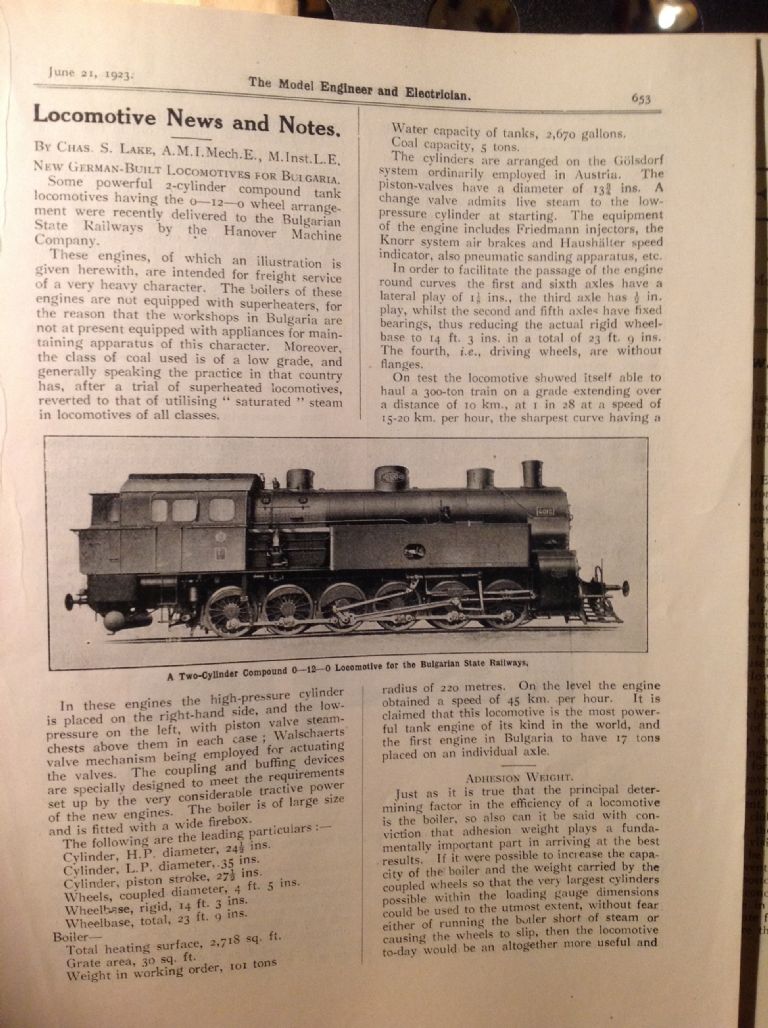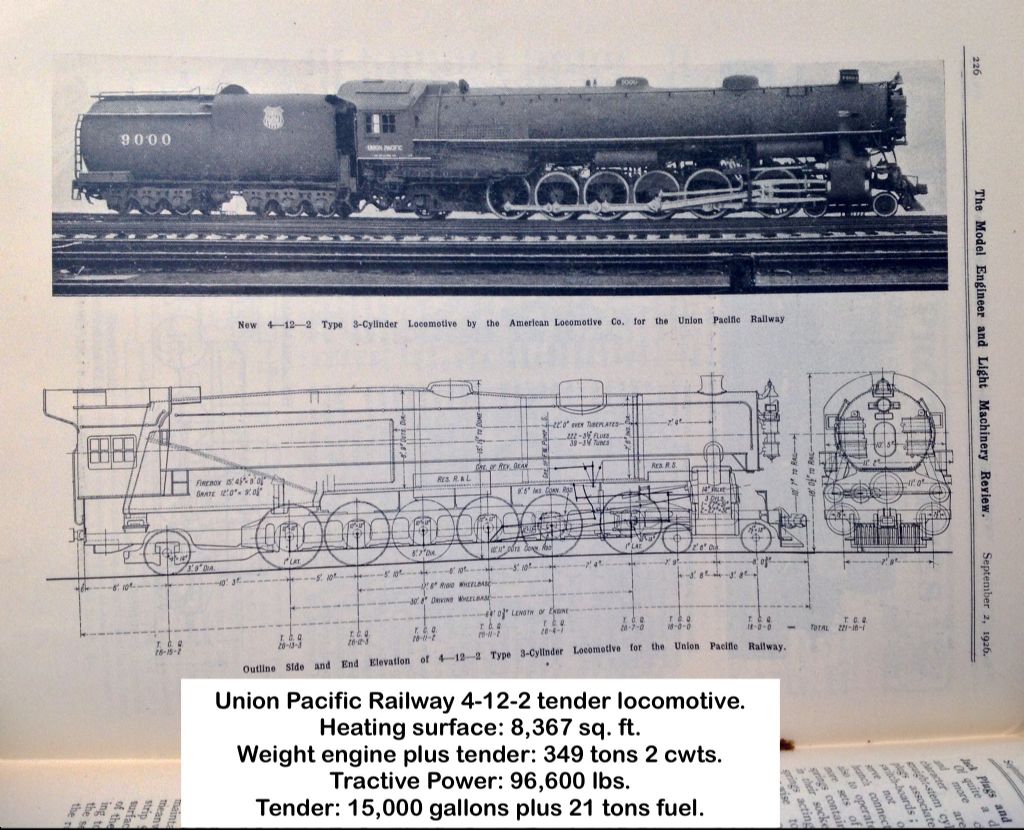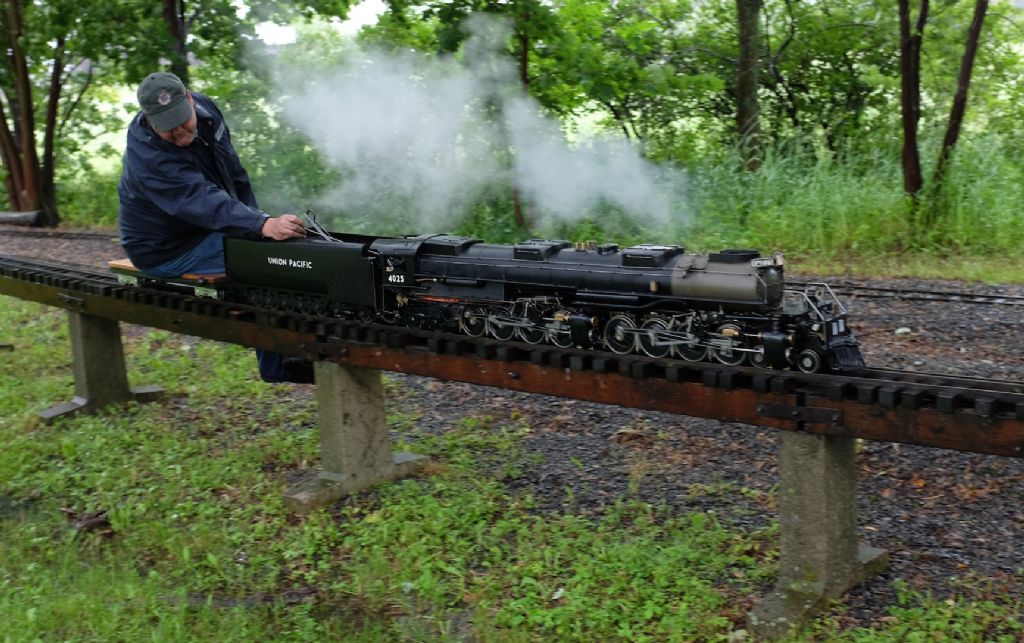The Union Pacific 12 coupled loco. used conjugated valve gear with what looked like the Gresley/Holcroft design. The locos were numbered in the 9000 series.
I think that Russia made a 14 coupled loco, but could only be useful on straight track.
Lots of tractive effort, but locos with so many coupled wheels must have been barred from any track with a distinct curvature!
The British rail 10 coupled 9F s had flangeless centre driving wheels, and probably a lot of side float on the other axles. Not only could they pull, but could run at express passenger speeds when required! Possibly the last and best steam locos made in Britain.
The alternative was use an articulated loco like a Garrett or a Mallet, (although, strictly, Mallet were compounds). Some U S railroads, such as Union Pacific ( Big Boys and Challengers) used simple expansion articulated locos.
Garrets were simple expansion machines, with a large boiler articulated above the engine units, and came in 4, 6 or 8 coupled forms..
The Erie Railroad even had a Triplex, (The Matt H Shay) described as a Mallet, with an engine unit under the tender, as well,
On a smaller scale, the logging roads used two (or even three) truck Shays, others used Heisler or Climax locos to obtain sufficient traction on sharply curved track. poorly laid in the woods as a temporary measure. But these were mounted on two axled trucks, to use full weight for adhesion, and flexibility.
The Shay power unit was usually a three cylinder mounted on the right hand side of the loco, driving the trucks through longitudinal shafts and bevel gears. The Heisler had a V twin steam engine mounted under the boiler, driving each truck, again via longitudinal shafts and bevel gears. The Climax prototype was merely a steam engine and boiler mounted on a flat truck and driving via chains.
Howard
Edited By Howard Lewis on 20/05/2015 18:40:40
Another JohnS.









